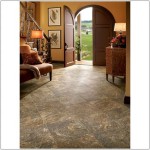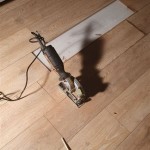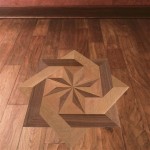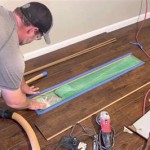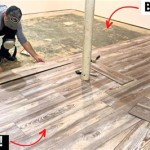Can You Lay Pine Flooring on Concrete?
Pine flooring, known for its affordability, warm aesthetic, and distinctive knots, is a popular choice for homeowners. However, laying pine flooring directly on concrete can present challenges. Concrete surfaces are often uneven, cold, and prone to moisture issues, potentially affecting the longevity and performance of the pine flooring. Understanding the considerations and proper techniques is crucial for ensuring a successful installation.
Prepare the Concrete Subfloor
Before installing pine flooring on concrete, it's imperative to prepare the subfloor adequately. This involves addressing any imperfections, ensuring a level surface, and creating a moisture barrier.
Leveling: Uneven concrete can lead to squeaky floors and premature wear on the pine flooring. Self-leveling compound or thinset mortar can be used to smooth out minor inconsistencies. For significant unevenness, consider using a concrete leveling screed.
Moisture Barrier: Concrete can release moisture, leading to warping and cupping in wood flooring. A moisture barrier, typically a 6-mil polyethylene sheet, is essential to prevent moisture from reaching the pine planks. The barrier should be laid out and secured to the concrete using tape or staples.
Cleaning: After leveling and applying the moisture barrier, thoroughly clean the concrete surface, removing any debris or contaminants that could affect the adhesive.
Choosing the Right Underlayment
Underlayment plays a critical role in bridging the gap between the concrete subfloor and the pine flooring, providing insulation, soundproofing, and a cushion that minimizes noise and footfall.
Types of Underlayment: Common options include:
- Foam Underlayment: Offers excellent cushioning and sound absorption.
- Cork Underlayment: Provides natural insulation and sound absorption, along with a soft underfoot feel.
- Membrane Underlayment: A thin, durable material that provides moisture protection and a stable base for the flooring.
- Combination Underlayment: Combines the features of several types, offering various benefits in a single product.
The best underlayment for pine flooring on concrete depends on factors such as the desired level of insulation, sound dampening, and budget.
Installation Methods
There are two primary methods for installing pine flooring on concrete:
Glue-Down Installation: This method involves applying a high-quality, moisture-resistant adhesive to the concrete subfloor and securing the pine planks directly to the adhesive. Glue-down installation is best suited for stable, well-prepared concrete surfaces.
Floating Installation: This method involves using a system of interlocking planks that are laid over an underlayment without being attached to the concrete subfloor. Floating installation provides flexibility and allows for slight movement, which can be advantageous in situations where the concrete subfloor is less than perfectly level. This method also allows for easier floor removal if necessary.
The chosen installation method heavily depends on the condition of the concrete subfloor and the desired aesthetics of the final floor. Consult with a professional flooring installer to determine the best method for your specific project.

How To Install Tongue Groove Hardwood Floors Over Concrete

Diy Wide Plank Pine Floors Part 1 Installation The Roots Of Home

Diy Wide Plank Pine Floors Part 2 Finishing The Roots Of Home

Herringbone Parquet Flooring Installation Gluing Down On Concrete Full Tutorial Start To Finish

Beautiful Pine Flooring Using Tongue And Groove Boards The Creek Line House

How To Install Pine Floors Diy Family Handyman

How To Install Pine Floors Diy Family Handyman

Diy Wide Plank Pine Floors Part 1 Installation The Roots Of Home

Lay Your Own Wood Floors Installing Real

Make Your Own Plank Flooring Using 1 X 12 Lumber Hallstrom Home
See Also

